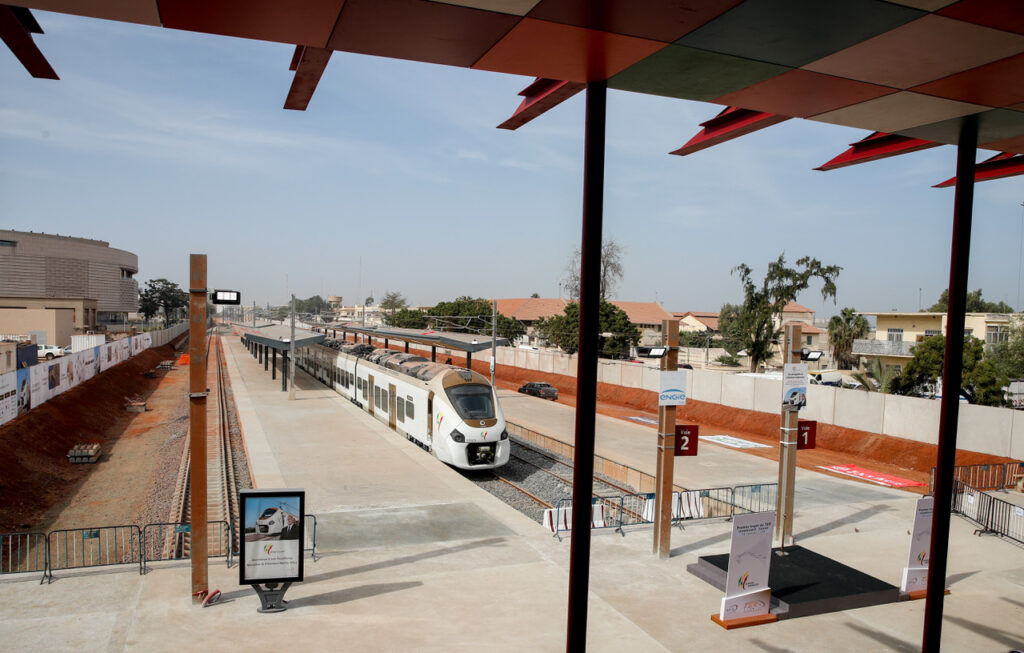- AfDB will provide US$98.62 million to Burundi in the form of grants and US$597.79 million to Tanzania in the form of loans and guarantees.
- The Joint SGR Project plays a pivotal role in fostering development, facilitating trade, and enhancing accessibility across East Africa.
- Investment will also unlock and connect key economic processing zones, industrial parks, Inland Container Depot, and population centers along the central corridor.
The Board of AfDB has taken a significant step in advancing East Africa’s regional connectivity and infrastructure development by approving a total financing package of U$696.41 million for Burundi and Tanzania Standard Gauge Railway (SGR) Project.
This funding is designated for the initiation of Phase II of the Joint Tanzania-Burundi-DRC SGR Project. The ambitious investment aims to construct 651 kilometers on the Tanzania-Burundi railway line, a key component of the broader effort to enhance transportation and trade links in the East African region.
The financing from the AfDB will facilitate the creation of a single electrified standard gauge railway, strategically divided into three lots to efficiently manage the development process. The Tabora–Kigoma section covering 411 kilometers, and the Uvinza–Malagarasi section spanning 156 kilometers, both situated in Tanzania, constitute two lots.
The third lot involves the Malagarasi–Musongati section, covering 84 kilometers in Burundi. The comprehensive nature of this standard gauge railway project is designed to seamlessly integrate with Tanzania’s existing railway network, ultimately providing crucial access to the vital port of Dar es Salaam.
Joint Tanzania-Burundi-DRC SGR Project
The ongoing progress of the Joint Tanzania-Burundi-DRC SGR Project is notable, with 400 kilometers of rail infrastructure already completed in Tanzania, connecting Dar es Salaam to Dodoma in the initial phase of the project.
Construction for the remaining section from Dodoma to Tabora is currently underway, highlighting the tangible impact of the AfDB’s financial support in advancing the project’s realization.
As regional connectivity and economic integration take center stage, initiatives like the Joint SGR Project play a pivotal role in fostering development, facilitating trade, and enhancing accessibility across East Africa.
AfDB said it will provide US$98.62 million to Burundi in the form of grants and US$597.79 million to Tanzania in the form of loans and guarantees. As the Initial Mandate Lead Arranger (IMLA), the Bank will structure and mobilize financing of up to US$3.2 billion from commercial banks, Development Financial Institutions (DFIs), Export Credit Agencies (ECAs) and institutional investors. The total cost of the project both in Tanzania and Burundi is estimated at nearly US$3.93 billion.
Access to an efficient cost-effective long-haul bulk transport service through the SGR will incentivize large-scale mining and commercial agriculture along the corridor. It will transform the Central Transport Corridor to an economic corridor by enhancing trade and manufacturing opportunities along the corridor influence zone, and provide for a shift from road trucking transportation, which causes accidents and high road maintenance cost.
The SGR railway network will also unlock and connect key economic processing zones, industrial parks, Inland Container Depot (ICDs), and population centers along the central corridor.
Read also: Kenya, Uganda in talks on SGR extension financing
SGR Project to enhance accessibility, promote trade
This will enhance accessibility and promote economic activities. Further, the project will contribute to building resilience by supporting the creation and development of institutions that will manage the new railway sector in Burundi and supporting capacity building through skills training in both countries.
This project is a priority for not only the East African Community (EAC) Rail Master Plan, but also the African Union’s Program for Infrastructure Development in Africa (PIDA) and will facilitate economic and social transformation in both countries and in the region.
The construction of this railway will allow Burundi to intensify the exploitation of nickel, of which the country has the 10th largest deposit in the world in the Musongati mining fields.
The country also has resources such as lithium and cobalt, which are expected to generate significant revenue for the country through the rail link with the port of Dar es Salaam which currently accounts for 80 per cent of the country’s import and export trade. This will add value to the national GDP and allow Burundi to have additional resources to accelerate its social and economic development.
The project is aligned with the Bank’s Ten-Year Strategy and two of its operational priorities, the “High 5”, “Integrate Africa” and “Industrialize Africa”. It is also in line with the Regional Integration Strategy Paper of the Bank for East Africa (2023-2027) and the Bank’s Country Strategy Papers (CSPs) for Tanzania (2021-2025) and Burundi (2019-2023).

